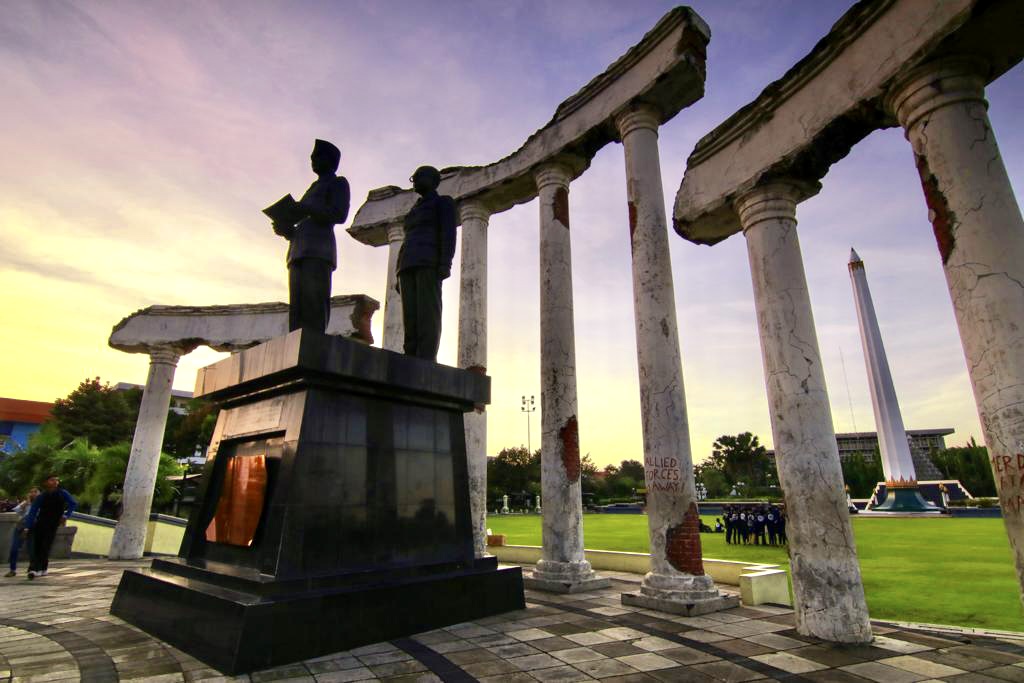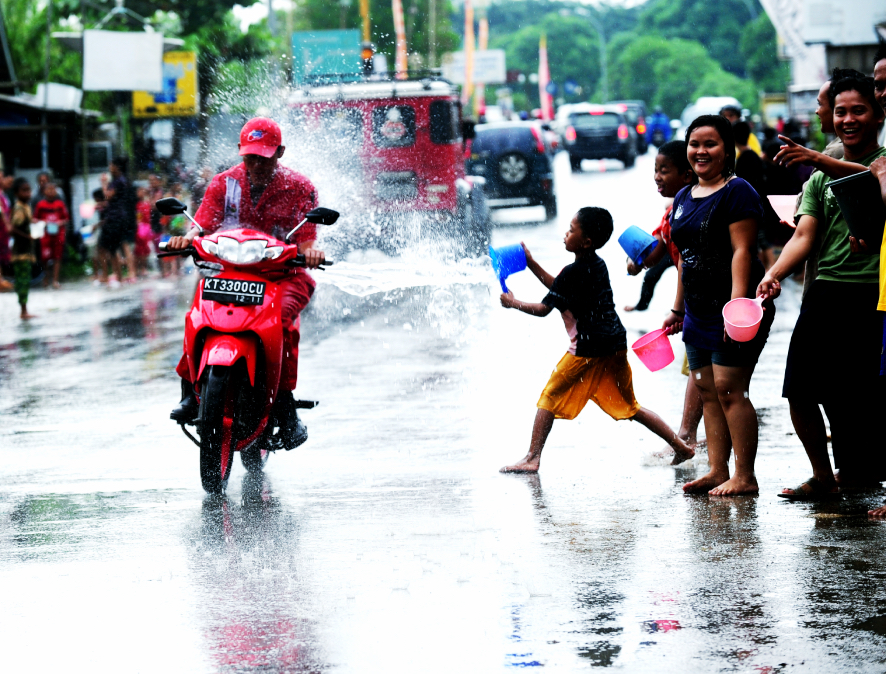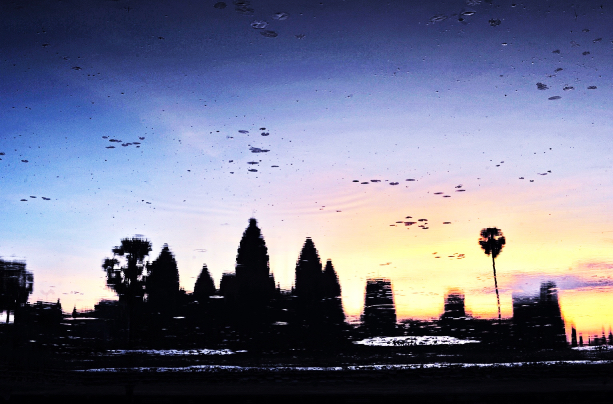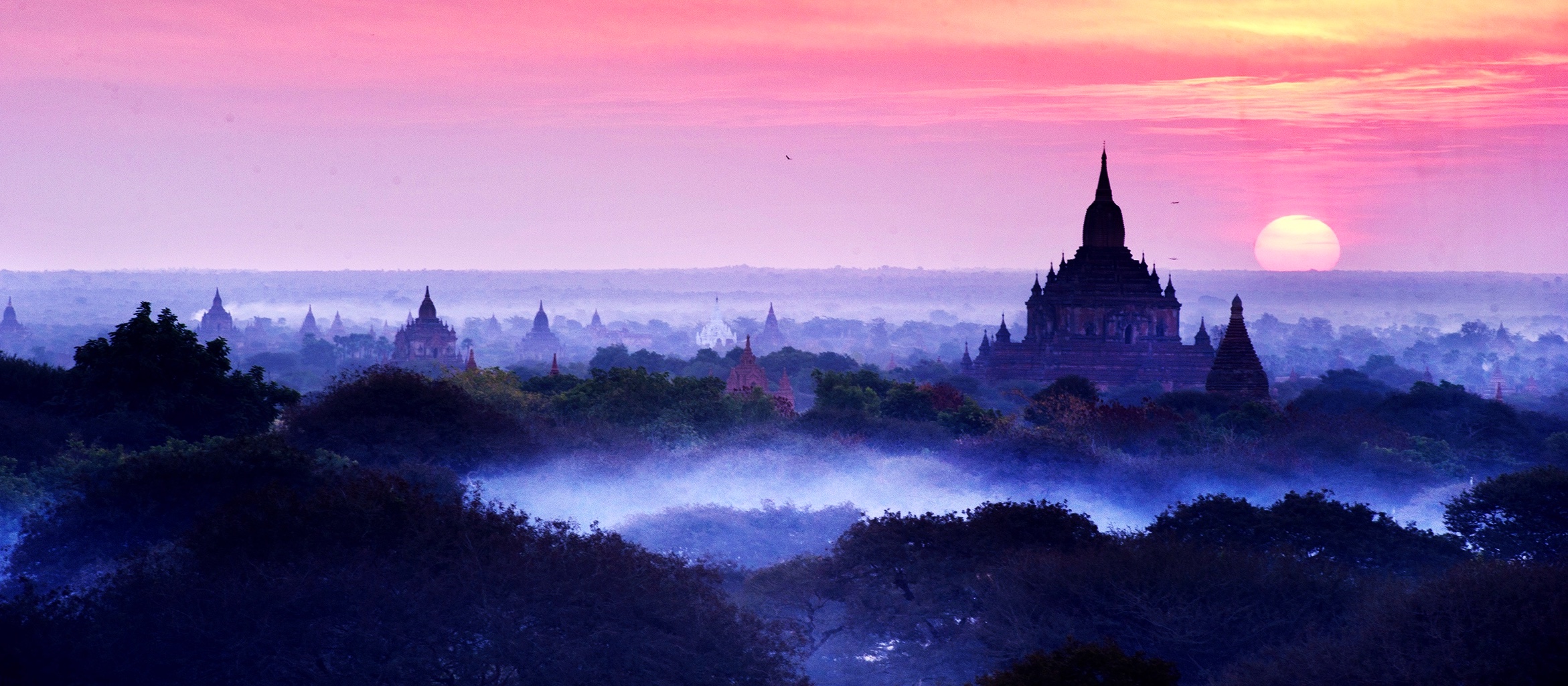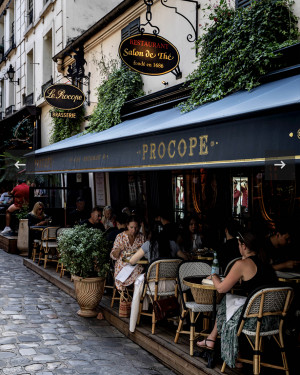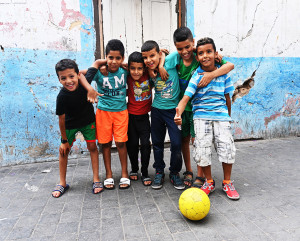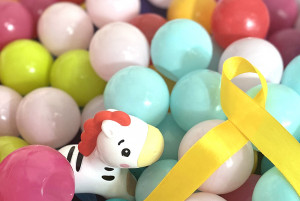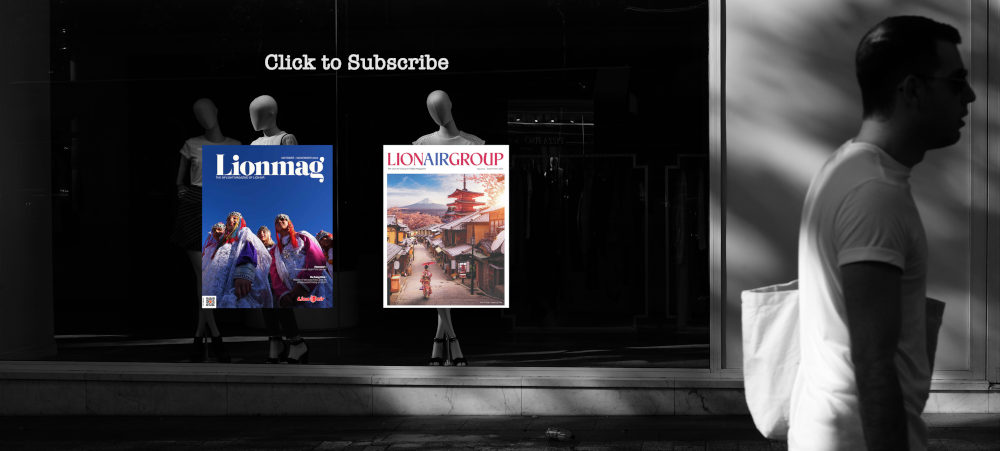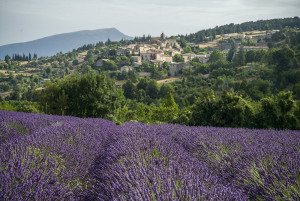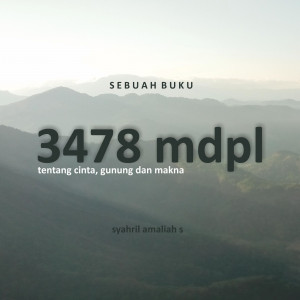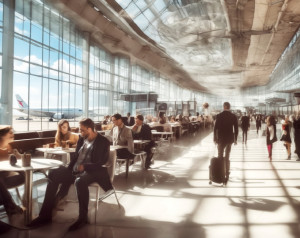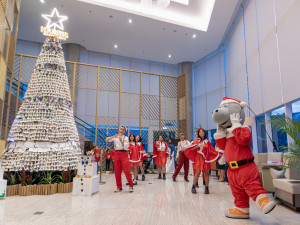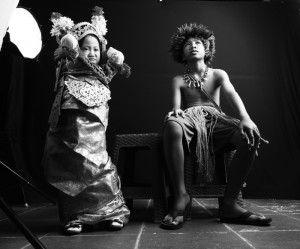From the Arab Quarter, you can head the short distance to Chinatown, or just north to Tanjung Perak, the port of Surabaya, and the historic harbour Kali Mas. Here one of the great sights of Indonesia, the traditional wooden boats of the Bugis (phinisi), are stretched out down the dock. This great race of seafarers and boat builders from South Sulawesi are famous for their nautical exploits and have been much romanticised by writers such as Joseph Conrad. While the black sails of the Bugis pirates once terrorised all who sailed the waters of eastern Indonesia, these days you will only be greeted by smiling faces of men from everywhere from Papua to Sumatra as they go about their frenetic loading of the boats.
It was in Surabaya that the fires of the fight for Indonesian independence exploded. After the Japanese surrendered in August 1945 it was apparent that the Dutch were intent on re-establishing their pre-war East Indies empire. Not far from the Arab Quarter is the Jembatan Merah (Red Bridge) which became a focal point in the struggle for Indonesian independence. It was here in the very heart of old Surabaya that the savage battles earned Surabaya the name “the City of Heroes”. A few tangled streets away, the heroes of Surabaya are commemorated in the open spaces of Jalan Pahlawan at Tugu Pahlawan (the Heroes' Monument).
When you have had enough sightseeing, head for the historic, and now beautifully restored Hotel Majapahit for a cool drink or coffee. Sitting in the elegant lobby, surrounded by courtyards of trees and fountains, contemplate the historic flag incident of 19 September 1945 actually took place in this very hotel. It was here on that day that the people of Surabaya stormed the hotel to tear down the recently raised Dutch flag as it was an insult to Indonesia’s proclamation of independence made only one month earlier.
If you want to shop (an activity for which all Indonesians have a passion), cross the road to the massive Tunjungan Plaza. This seven storey monster mall (one of a number in Surabaya) has up market department stores like Sogo, shops of all types, food courts, many cafes including Excelso and Dome, movie theatres, game arcades, and restaurants. There are plenty of hotels from 5 star down in Surabaya. In fact, both the superb Surabaya Sheraton and Hotel Tunjungan even adjoin the mall.
If your appetite for sightseeing remains undiminished, the imposing Masjid Al Akbar Surabaya (possibly the biggest mosque in south east Asia) is perhaps 30 minutes from the centre of the city by taxi. Other sights include Masjid Cheng Ho, a mosque with beautiful Chinese architecture, the Joko Dolog statue, a large zoo set in parklands with many animals unique to Indonesia including a great Komodo dragon display, and even an old Soviet submarine.
When night falls and you are still in need of food and other excitement, your budget will dictate your next move. From a fancy up market restaurant like Restauran Kuningan International to the restaurants and food courts of the malls to the warungs scattered all over the city or in Pasar Genteng, there is no shortage of great food here.
For later night time entertainment, Surabaya has most of what Jakarta has to offer. You can head to a great live music venues or stylish bars - like Colors, Blowfish, Foreplay, Van Java, Vertical Six, or Redboxx. You can go to karaoke or to any number of ear drum splitting techno "Heart of Darkness" discos in the upper regions of the shopping malls and elsewhere. It is all in Surabaya.
The city feels different to Jakarta. For tourists, it is much more manageable. With a great history, interesting culture, and good facilities, Surabaya is well worth a visit and some exploration in its own right.
Previous Page : Surabaya Indonesias Vibrant Second City
